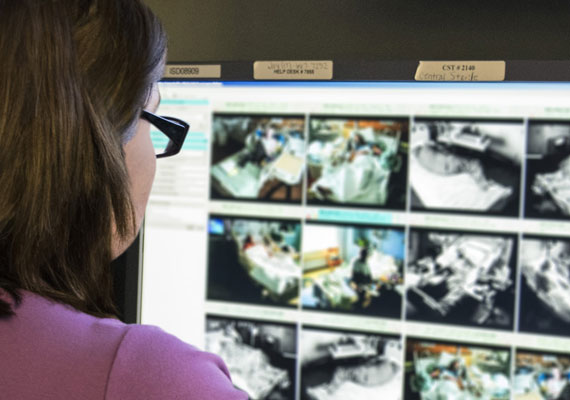The TeleSitter® Solution: What’s New and Where It’s Heading
Fall Prevention, Nurse Leadership
June 7, 2021
Research results in three recent national studies on the use of the AvaSure TeleSitter® solution

To share research results in three recent national studies on the use of the TeleSitter solution, AvaSure recently hosted Telesitting: What’s New and Where it’s Heading, a webinar attended by over 500 chief nursing officers from all 50 states plus Washington, D.C., including VAs from around the country. The webinar was presented by AvaSure’s Chief Innovation Officer Lisbeth Votruba, MSN, RN, and Nurse Consultant Patricia Quigley, PhD.
Their studies on Patient Engaged Video Surveillance (PEVS) based on AvaSure’s Online Reporting Of Nursing Analytics (ORNA), the groundbreaking research is clear:
- PEVS is clinically proven to foster significantly safer hospital environments for patients and caregivers
In addition to considerable cost savings with the use of PEVS, perhaps the most telling outcome of the studies is the substantial improvement in safety for patients in witnessed events. - Prevent Falls
In Falls Prevention, the 12-month study of 71 hospitals and 15,021 patients considered as high risk for fall by nursing staff, shows that with PEVS, falls were reduced to .38 falls/1000 patient days of surveillance.
“This is getting to zero, where falls hardly exist,” Quigley said. The study revealed that hospitals equipped with PEVS saw:
- A savings of 453 annualized FTEs typically used for traditional sitting, representing over 943,000 hours
- A 92 percent reduction to 38 FTEs to monitor PEVS
Improving nurse safety against violence
The second study focused on violence against nursing workforce.
“While industry principles, OSHA guidelines and Joint Commission challenges to reduce sentinel events have been published in the past few years, there hasn’t been much improvement in reducing violence,” said Votruba.
This study included 300 witnessed events, 15,434 patients in 73 hospitals over a 21-month period to learn impact of PEVS on nursing workforce safety. The study found that with PEVS, for every abusive event witnessed, 25 were reported, including usually non-recorded verbal incidents.
And while most of the patients in this study were being monitored for fall prevention, and not violence, Votruba noted that these findings present an opportunity for more research on how to identify which patients might have the tendency to become violent.
Using PEVS for COVID-19 isolation patients
The third study, by Quigley, Votruba and Jill Kaminski just released in MedSurg Nursing, focused on PEVS for COVID-19’s acute isolation population, monitoring 1,625 patients in 97 hospitals over a two-month (March-April 2020), and representing 98,918 hours of observation.
Key findings included:
- 42 witnessed adverse events experienced among 39 patients
- 29 of the events involved a dislodgement of lines
- 9 falls (one unassisted)
- 2 self-harm events
- 2 physical abuse toward nursing events
- while response time was lowered due to the donning of PPE, there were more verbal interactions per day to comfort isolated patients during this surge period
These studies show that real-time surveillance at the point of care is cost-effective, improves safety and is easily adoptable by nurses. Nurses were resourceful in fast-tracking the technology in the early weeks of the COVID-19 pandemic as they were pulling from as many resources as they could at the height of the surge.
Lisbeth also shared highlights from several studies she recommends for further reading as CNOs consider the technology for their hospitals. Those studies are linked below for further reading.
AvaSure is working hard to advocate that PEVS programs be a workplace safety initiative through the American Nursing Association.
Ready to get started?
Get in touch with an AvaSure representative to learn more about AvaSure's AI-enabled virtual care solutions.
